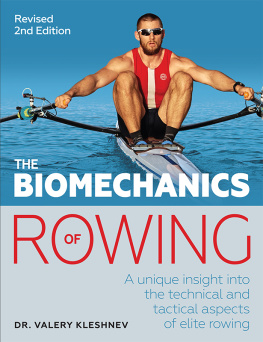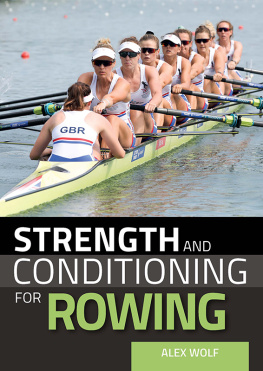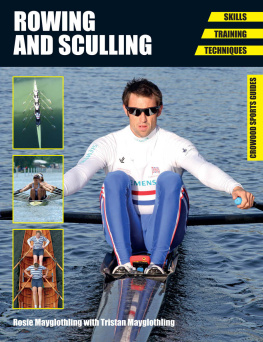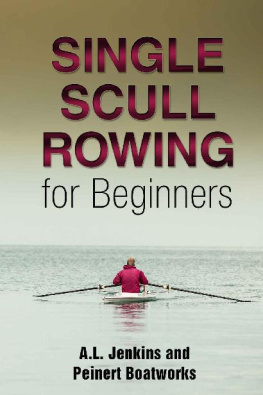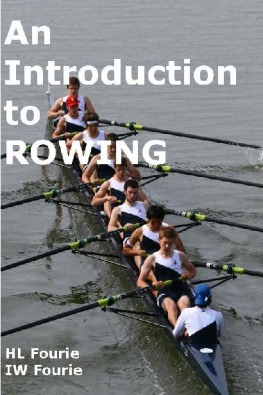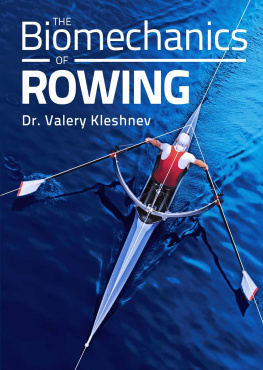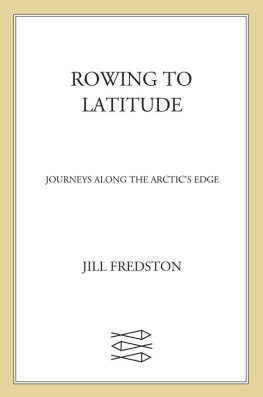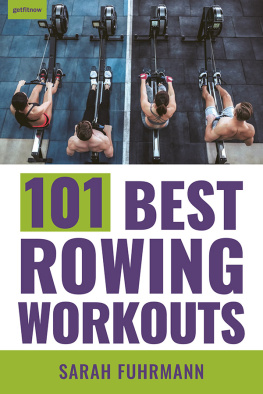Page List

First published in 2016 by
The Crowood Press Ltd
Ramsbury, Marlborough
Wiltshire SN8 2HR
www.crowood.com
This e-book first published in 2020
Second edition 2020
Dr Valery Kleshnev 2016 and 2020
All rights reserved. This e-book is copyright material and must not be copied, reproduced, transferred, distributed, leased, licensed or publicly performed or used in any way except as specifically permitted in writing by the publishers, as allowed under the terms and conditions under which it was purchased or as strictly permitted by applicable copyright law. Any unauthorised distribution or use of this text may be a direct infringement of the authors and publishers rights, and those responsible may be liable in law accordingly.
British Library Cataloguing-in-Publication Data
A catalogue record for this book is available from the British Library.
ISBN 978 1 78500 778 1

PREFACE TO THE SECOND EDITION
In the four years since the first edition of Biomechanics of Rowingwas published, I received many questions from readers that were quite challenging sometimes, but it was always a very encouraging experience for me. It helped to identify new research areas and move our knowledge further forward. I would like to thank all the readers of my book, my colleagues, sport scientists, rowers and coaches for their interest, questions and very positive feedback.
The past four years were very busy for me, with continuous research and developments in rowing biomechanics, along with new data collection and analysis, which leads to new findings. Every month I published a newsletter, and each of them was an attempt to extend our expertise further in various directions. A lot of new data was collected in BioRow testing of rowers of many squads, and from races at World regattas. New methods were introduced in analysis of rower-boat system and blade work. A few new criteria of rowing technique were developed, such as Catch, Rowing Style and Finish factors, which helped make evaluation more precise and understandable for rowers.
This second edition was updated with the latest information and developments obtained after publishing the first edition. The basic concepts of efficient rowing technique remained unchanged as no contradictory facts were found, and rowing technique of most of the winning crews fit quite well to our criteria. The text was appended with new and more detailed definitions, the latest trends of the rowing speed, racing stroke rates and other extra information. Also, a few complicated or ambiguous pieces of the text were removed, including some predictions and target values, which were replaced by more objective trends and statistical data in rowers categories.
I do hope that these updates make the book easier to read and be comprehended by a wider audience of rowers and coaches. And, of course, your feedback is always welcomed.
CHAPTER 1
INTRODUCTION
This book is intended for rowers and coaches who want to improve their rowing technique, row faster and maximize their results in regattas, given their physical conditioning. Here I have tried to summarize my knowledge of rowing biomechanics, which was obtained from nearly thirty years of working with thousands of rowers and coaches from all around the world: from Europe to Australia, from China to the USA and Brazil. Many of them ended up being Olympic and World champions and I have learned a lot from them. This knowledge didnt come as a divine revelation but is a product of extensive measurements and analysis, continuous attempts to solve many puzzles and exhaustive studies of the efficiency techniques of winning crews. Though inspiration is still important, I believe the only way to achieve it is through hard work and continuous thought.
I can say that my understanding of rowing biomechanics and technique is completely different now from that in 1986, which is when I finished my fourteen-year rowing career and started pursuing sport science. It was a very steep learning curve. In the beginning I had very limited instrumentation and had to rely on experts and literature, which mainly emphasized the importance of smooth boat velocity and so on. If someone had asked me at the time How should the best force curve look? my answer would have been quite evasive: It is possible to win with various force curves. I just didnt know. Now I realize how many mistakes we made at that time.
The logical question that I always ask myself is Are you sure now that all these conclusions are true? The answer I give is: They should be correct, on the basis of all the available evidence and its analysis. However, if new facts contradicting the theory should be found, or someone finds an error in the analysis, I have to revise it and develop a new theory.

